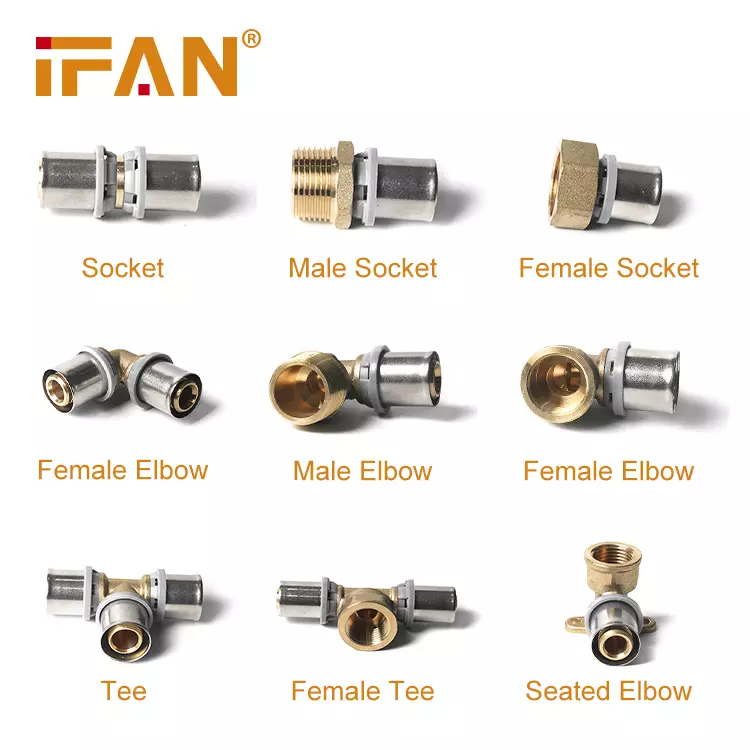PEX press fittings are crucial components in plumbing systems, known for their durability and ease of installation. Understanding their manufacturing process is essential for appreciating their quality and performance. This article delves into the various stages of manufacturing PEX press fittings, highlighting key aspects and providing detailed examples.
Material Selection
The manufacturing process of PEX press fittings begins with material selection. These fittings are commonly made from high-quality metals such as brass, stainless steel, or sometimes plastic. Brass is preferred for its corrosion resistance and strength. Stainless steel offers higher durability and resistance to extreme conditions.
For instance, brass press fittings are often used in residential plumbing due to their cost-effectiveness and ease of machining. In contrast, stainless steel fittings might be selected for industrial applications where higher pressure and temperature tolerance are required. The choice of material affects the fitting’s performance and longevity.
Component Design
The next step is designing the components of the press fittings. This involves creating detailed technical drawings and 3D models using computer-aided design (CAD) software. The design phase ensures that the fittings will meet the necessary specifications and standards.
For example, the design must include precise dimensions for the fitting’s press rings and sealing surfaces. These components need to fit perfectly with PEX tubing to ensure a leak-proof connection. Engineers use CAD software to simulate the fitting’s performance under different conditions, adjusting the design as needed to optimize functionality.
Metal Forming
Once the design is finalized, the metal forming process begins. This step involves shaping the raw metal into the desired form. There are several techniques used, including forging, machining, and stamping.
In forging, metal is heated and then shaped using a die and hammer. This method is commonly used for brass fittings. Machining involves cutting and drilling the metal to achieve precise dimensions. Stamping uses a press to form the metal into specific shapes. Each method has its advantages, depending on the material and desired final product.
Machining and Finishing
After forming, the fittings undergo machining and finishing processes to achieve their final shape and surface quality. Machining involves removing excess material to ensure precise dimensions. This step includes turning, milling, and drilling operations.
Finishing processes include polishing and deburring. Polishing improves the surface appearance and smoothness, which is crucial for a proper seal. Deburring removes any sharp edges or burrs that could affect the fitting’s performance or safety. For example, a brass fitting might be polished to a high shine to prevent corrosion and improve aesthetics.
Quality Control and Testing
Quality control is a critical phase in the manufacturing process. Each batch of PEX press fittings undergoes rigorous testing to ensure it meets industry standards. Tests include pressure testing, leak testing, and material inspection.
Pressure testing involves applying high pressure to the fittings to ensure they can withstand operational conditions without leaking. Leak testing checks for any potential leaks at the connections. Material inspection verifies that the fittings are made from the correct materials and have no defects. For example, a batch of stainless steel fittings might be tested for resistance to high temperatures and corrosive environments.
Assembly and Integration
After passing quality control, the fittings are assembled and prepared for integration into plumbing systems. This process involves attaching additional components such as press rings and seals. The press rings are crucial for creating a secure connection with the PEX tubing.
In assembly, press rings are fitted around the connection points. Seals are inserted to ensure a tight, leak-proof fit. The fittings are then packaged and labeled, ready for distribution. For example, a set of PEX press fittings for a residential plumbing system might include fittings of various sizes and types, each carefully assembled and inspected.
Packaging and Distribution
The final step is packaging and distribution. Proper packaging protects the fittings during transit and ensures they arrive in good condition. Packaging materials are chosen to prevent damage and contamination.
Fittings are often packed in boxes with protective inserts to prevent movement and impact. Labels include important information such as size, material, and certification. Distribution involves shipping the fittings to wholesalers, retailers, or directly to customers. For example, a shipment of PEX press fittings might be sent to a hardware store, ready for sale to plumbers and contractors.
Conclusion
The manufacturing process of PEX press fittings involves several critical stages, from material selection and design to testing and distribution. Each step is crucial for ensuring the quality and performance of the fittings. By understanding these processes, users can appreciate the precision and care that goes into creating these essential plumbing components.
Through careful material selection, precise design, and rigorous testing, PEX press fittings are produced to meet high standards of durability and reliability. Their manufacturing process ensures that they perform effectively in various plumbing applications, providing a dependable solution for connecting PEX tubing.
If you have read this article and have any questions, please feel free to contact IFAN. Below is our contact information:
Whatsapp:+86 13373827623
Email:[email protected]




















































